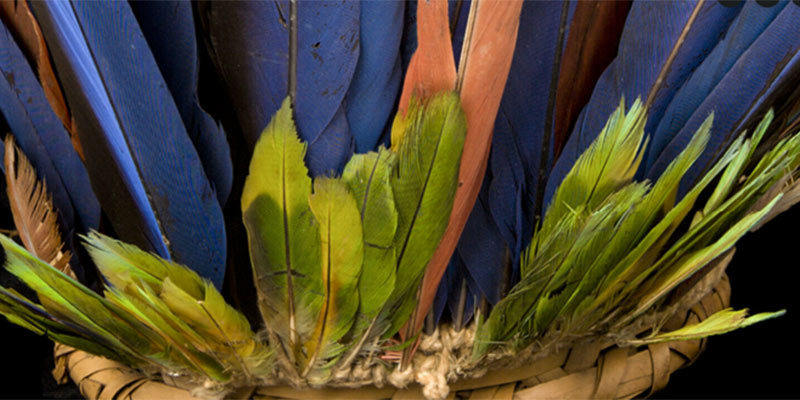Pearls, Sunflowers & Plantation: New Perspectives on Shakespeare’s England
-
Case study
- Culture and Communication
Posted on 4 October 2024
Dr Lauren Working’s research presents ground-breaking new perspectives on how the Americas permeated Tudor and Stuart art and literature.

The issue
For a long time, Tudor and Stuart colonialism has been seen as a story about the English going out and leaving their mark on the world, rather than the Americas coming in. Entire stories – about the earliest beginnings of England’s territorial expansion, but also Indigenous presences and resistance to the imperial project – have been relegated to the shadows. How can English encounters with the Americas and its people be better integrated into our understanding of Renaissance England? What connects Venezuelan coastlines, featherwork made from tropical birds, and Chesapeake plantations to portraits and Jacobean playhouses?
The research
Dr Lauren Working has written extensively about how people, plants (especially tobacco), and artefacts from the Americas influenced English politics, culture, and society. Her academic book about the impact of English colonial projects on early Stuart politics and sociability, The Making of an Imperial Polity: Civility and America in the Jacobean Metropolis, jointly won the Royal Historical Society’s Whitfield Prize in 2021.
Also in 2021, Dr Working was selected as a BBC Radio 3 New Generation Thinker. This has led to multiple contributions to the BBC’s Arts & Ideas programming, including episodes of The Essay on Ruffs in Jamestown and Boy with a Pearl Earring.
The outcome
Dr Working is a consultant for several museums and heritage sites in the UK, including the National Portrait Gallery and the National Trust, where she has collaborated on projects about colonial histories and Indigenous voices in national collections. She was involved with the National Portrait Gallery's major renovation project, Inspiring People (2020-2023), acting as an advisor for the Tudor galleries' new narratives about global travel and colonialism. Related to this, she has created a freely-available resource on Illuminating the Global in Tudor and Early Stuart Portraits for the NPG’s Schools Hub.
She is currently writing a trade book called A Golden World, which will be published by Faber Books in 2026. It offers a ‘perspective-shifting history of the Renaissance’ told through transatlantic objects and their makers, tracing sunflowers, muskrats, embroidered animal skins and Aztec codices from Indigenous environments to Tudor interiors and baroque masterpieces.

Dr Lauren Working
Dr Lauren Working is a Lecturer in Early Modern Literature. Her research focuses on sixteenth and seventeenth-century literary sociability, material culture, and plantation. Her introduction to Shakespeare's The Tempest for Oxford World's Classics was published in 2024.
